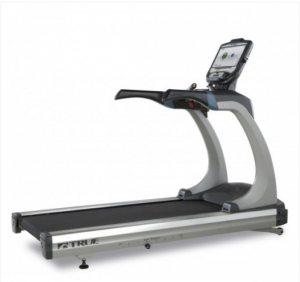One challenge of purchasing a treadmill for your home is understanding its cushioning system. In our experience, treadmill cushioning systems are among the least-understood features of the machine.
Treadmill Cushioning—What It’s Not
At many big box retailers, stepping onto a floor-model treadmill often feels like stepping onto a trampoline. That’s intentional. Mass-market treadmill manufacturers design their belts specifically for extra bounce and ‘give’ so that potential customers can feel confident that the cushioning system is intact, and their knees and joints will be preserved.
Only problem is, nothing could be further from the truth. That springy feel (which doesn’t last long with repeated use) coupled with today’s super-engineered running shoes, may actually result in too much cushioning to meet your training needs or prevent injury. That’s why for anyone looking at residential treadmills, an adjustable cushioning system is key.
The Foot Mechanics of Treadmill Cushioning
You may not know it, but your foot has three ‘zones.’ When you run, each of these zones is put under pressure: There’s the Strike Zone, the back of your foot where you initially ‘strike’ the belt when you run; the Transition Zone, which is the arch of your foot while your weight is entirely borne by that leg; and the Pushoff Zone, the front or ball of your foot where you literally push off the belt.
The only one of these zones that actually benefits from extra cushioning is the Strike Zone. That’s where your foot hits the belt with all your weight and momentum. The rest of your running motion is actually inhibited by spongy cushioning. In the Transition Zone you need stability (not ‛give’)—and in the Pushoff Zone, cushioning and ‛give’ will actually cost you energy and put extra stress on your lateral stabilizers, all while generating extra stress on your plantar tendon, which can leave you prone to injury.
The three zones of your foot are precisely why the ability to adjust your treadmill’s cushioning to meet your specific needs—be it sport-specific training, compression- or back-injury rehabilitation, or general fitness—is so important.
Understanding Adjustable Cushioning
Many Gym Source clients enter our showroom unsure about adjustable cushioning because the treadmills at their fitness clubs don’t have this feature. The reason is simple: Adjustable cushioning is a ‘wear’ item on a treadmill—and with a myriad of users at different abilities, adjustable cushioning can push the limit of what a commercial facility can offer in terms of user training and machine maintenance.
However, for residential use—where 1-4 people may be using the treadmill—adjustable cushioning makes a lot of sense. That’s why the adjustable cushioning feature is only found on the residential treadmill models we sell. Our favorite models include:
- The Boston Marathon GSX Treadmill—Limited Edition
- The TRUE ES900 Treadmill
- The TRUE PS800 Treadmill (a value-priced variation of the ES900)
At Gym Source, we offer a wide range of residential treadmills with superior adjustable cushioning systems. Before you buy a treadmill for your home, visit Gym Source and experience this technology for yourself.

